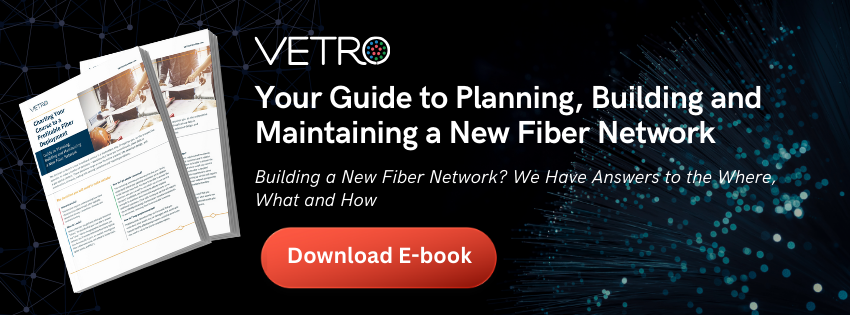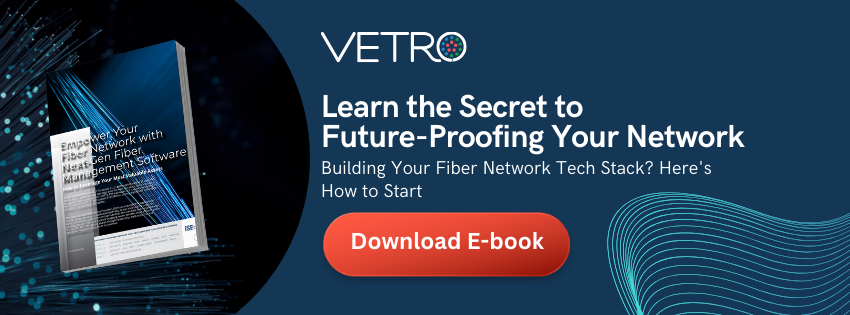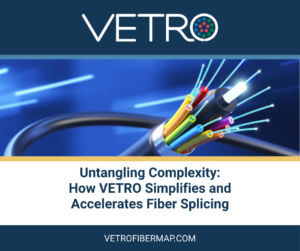The UK FTTP market is undergoing a period of consolidation, driven by high deployment costs and the need for economies of scale. The market is currently in the “scale” phase, with some altnets struggling to raise capital and facing potential mergers or acquisitions. FTTP companies are considering various strategic options to navigate this dynamic landscape.
“Since 2021, approximately 70% of capital raised by UK challenger FTTP operators has been allocated to just three companies: Cityfibre (accounting for approximately GBP6 billion, ~60% of total), Netomnia (~7%), and Gigaclear (~4%). Other large altnets such as Hyperoptic and Community Fibre have also secured capital prior to this period and are backed by financial institutions with considerable financial strength. The relative concentration of recent funding among these larger players suggests that the market is increasingly supporting a narrower subset of altnets believed to be long-term winners, enabling them to expand their deployments or acquire existing players. In response, many smaller altnets are now considering merger opportunities in order to benefit from greater combined scale.”
Alex Pericleous, Analysys Mason Tweet
The consolidation of UK altnets (alternative network providers) is driven by several key factors:
MARKET PRESSURES:
High competition: The UK fibre broadband market is highly competitive, with established players like Openreach and Virgin Media O2 alongside numerous altnets vying for market share. Consolidation allows altnets to pool resources, gain economies of scale, and compete more effectively.
Rising costs: Building and maintaining fibre networks is expensive. Rising costs of materials, labor, and inflation put pressure on smaller altnets, making consolidation a way to share infrastructure and reduce operating expenses.
Investor expectations: Investors who have backed multiple altnets may see consolidation as a way to optimize their portfolio, streamline operations, and generate higher returns.
STRATEGIC ADVANTAGES:
Faster network rollout: Merging networks can accelerate fibre deployment, allowing the combined entity to reach more customers and expand their market share faster.
Increased bargaining power: A larger altnet has greater negotiating power with suppliers, potentially leading to better deals on equipment and services.
Improved operational efficiency: Consolidation can eliminate duplicate operations, streamline processes, and reduce overall costs.
Diversification of offerings: Merging altnets with different strengths and weaknesses can create a more diverse portfolio of products and services, catering to a wider range of customers.
UK Altnet Consolidation Challenges
While there isn’t a single reason why consolidation of internet service providers (ISPs) fails, as the factors can vary depending on the specific context and circumstances.
Some reasons for consolidation failures include:
-
Heterogeneity: Altnets often use different technologies and vendors for their networks and customer systems. This heterogeneity makes it difficult to seamlessly integrate and manage the combined infrastructure. Difficulty in integrating customer service, billing systems, and network infrastructure can be complex and expensive, resulting in delays, cost overruns, operational inefficiencies service disruptions and customer frustration.
-
Overestimating synergies: Sometimes, the expected gains from consolidation are overestimated, leading to disappointment and disillusionment when the actual results fall short.
-
Data migration: Migrating customer data, service configurations, and operational workflows from multiple systems to a single platform can be complex and error-prone. Data integrity and continuity must be carefully managed.
-
Interoperability: Ensuring smooth communication and data flow between disparate systems is crucial. APIs, data formats, and security protocols must be aligned to prevent data silos and operational inefficiencies.
-
Network integration: Merging physical fibre networks can be technically challenging, requiring careful planning and execution to avoid service disruptions and ensure optimal performance.
-
Testing and validation: Thoroughly testing and validating the integrated system before migrating customers is essential to identify and address potential issues. This can be time-consuming and require specialized expertise.
-
Change management: Merging teams and adapting to new processes and procedures can be challenging for employees. Effective communication, training, and support are crucial to ensure smooth integration.
-
Cultural integration: Different altnets may have their own cultures and ways of working. Successfully merging these cultures is essential for long-term success.
-
Cost management: Consolidation projects can be expensive, requiring careful budgeting and cost control to avoid budget overruns.
-
Customer impact: Minimizing service disruptions and ensuring a smooth transition for customers is critical to maintaining their trust and satisfaction.
-
Regulatory compliance: Consolidated altnets need to comply with all relevant regulations, which can be complex and require careful attention.
Strategies for overcoming these challenges:
Consolidating fibre management systems for UK Altnets is a complex but crucial task for achieving operational efficiency and maximizing the value of their combined networks.
Here are some key approaches to consider:
Standardization and rationalization:
o Technology stack: Identify and prioritize common technologies and vendors across the merged entity. This simplifies integration, reduces training needs, and facilitates future upgrades.
o Data model: Establish a unified data model for network assets, services, and customer information to ensure data integrity and interoperability.
o Processes: Streamline and harmonize operational procedures for network provisioning, maintenance, and troubleshooting across all acquired networks.
Phased integration:
o Prioritize non-critical systems: Start by integrating back-office systems like billing and provisioning before tackling core network management platforms. This allows for smoother transitions and minimizes customer disruption.
o Modular approach: Break down the integration process into smaller, manageable modules, allowing for iterative testing and validation. This reduces risks and allows for course correction along the way.
Data migration and management:
o Data cleansing: Ensure data quality and consistency across different systems before migration to avoid errors and inconsistencies. This can involve data deduplication, standardization, and validation.
o Migration tools: Utilize specialized data migration tools to automate the process and minimize manual effort. These tools can handle large datasets efficiently and ensure data accuracy.
o Data governance: Establish clear data ownership, access, and security protocols to ensure data integrity and compliance with regulations.
Open communication and collaboration:
o Involve all stakeholders: Ensure all teams involved in the consolidation process, from network engineers to customer support, are informed and engaged throughout the project. This fosters collaboration and ownership of the new system.
o Transparency and communication: Maintain clear communication channels with customers and regulators regarding the consolidation process, timelines, and potential impacts. This builds trust and reduces uncertainty.
Investing in technology and expertise:
o Modernization: Consider upgrading legacy systems to modern, cloud-based platforms that offer scalability, flexibility, and easier integration.
o Specialized skills: Invest in training and development for personnel to acquire expertise in new systems and integration technologies.
o Third-party partnerships: Partner with experienced system integrators or managed service providers to leverage their expertise and resources for a smooth and successful consolidation.
Focus on customer experience:
o Minimize service disruptions: Implement comprehensive testing and validation procedures to ensure minimal downtime and seamless service delivery during the integration process.
o Proactive communication: Keep customers informed about potential service changes and proactively address any concerns they may have.
o Continuous improvement: Monitor the performance of the integrated system and gather customer feedback to identify areas for improvement and optimize the overall experience
By adopting these approaches, UK Altnets can navigate the complexities of fibre management system consolidation and achieve a unified, efficient, and customer-centric platform that supports their growth and competitiveness in the fibre broadband market.
Remember, this is a complex process with no one-size-fits-all solution. The specific approach will depend on the unique characteristics and challenges of each Altnet merger. However, by focusing on these key principles and actively managing potential roadblocks, UK Altnets can unlock the full potential of their consolidated fibre networks and deliver a superior experience for their customers.
How VETRO helps AltNet consolidation
Transitioning your fibre management infrastructure to VETRO can unlock a world of enhanced efficiency and control. This comprehensive process, encompassing analysis, design, and migration support, guides you seamlessly from your “as-is” system to the powerful capabilities of VETRO. Whether you’re seeking to replace a legacy system or simply elevate your fibre management game, this step-by-step approach ensures a smooth and successful migration, empowering you to leverage VETRO’s full potential and
optimize your fibre operations.
PHASE 1: ANALYSIS & DISCOVERY
Provide access: Grant access to documented architecture diagrams and subject matter experts (SMEs).
Review architecture: Review “as-is” system architecture and identify processes and systems using FMS data.
Data model review: Review the decommissioned FMS data model and identify stakeholders that rely on systems leveraging FMS data.
Replacement requirements: Work with system architecture stakeholders to discuss replacement requirements for external systems relying on FMS data.
Data mapping: Provide schema documentation and source data output for the Minimum Design Dataset (MDD) layers/attributes.
Schema mapping: Complete schema mapping documentation from existing to the existing new schema.
PHASE 2: MIGRATION DESIGN
Stakeholder identification: Identify stakeholders for account provisioning and Power User access.
Migration sandbox: Create a temporary migration staging sandbox with the target schema. Train Power Users.
SME involvement: Ensure SMEs attend review calls with the Migration Technical Team.
Date import: Develop a process to import FMS data.
Validate data: QA and sign-off on data for accuracy.
Spatial and connectivity testing: Complete testing of import for spatial and connectivity data.
Verification and validation: Verify and validate the Final Design Dataset (FDD). Clean and fix data exceptions in source data when necessary.
FDD Dry Run: Perform Dry Runs with exception reporting/analysis and data cleanup in preparation for production migration.
PHASE 3: MIGRATION SUPPORT
Production system readiness: Ensure critical systems are in place and operational with the VETRO production system.
Data leverage consultation: Provide consultation on how to leverage VETRO data to decommission redundant systems.
FDD export and access: Provide FDD export and access to Technical SMEs for Migration.
Production import and data issue resolution: Import FDD to the production instance and provide exception reports. Manually address data issues where required.
VETRO integration: Move Planning, Design, and Operational Fiber Management processes into VETRO.
POST GO LIVE:
Issue transition: Transition of all issues to the VETRO Support team.
Account provisioning and training: Provision accounts and train additional users.
UK fibre broadband is seeing its Altnets undergo consolidation. Driven by high competition, rising costs, and investor expectations, these mergers aim for economies of scale and increased bargaining power. However, challenges like technology differences, data migration, and cultural integration loom large. To succeed, Altnets need strategic approaches like standardization, phased integration, and customer- focused communication. VETRO, a fibre management system, offers support in this process, aiding smooth transitions and unlocking network potential.
Here are some additional resources you may find helpful:
Analysys Mason: The UK FTTP consolidation cycle
Fibre Systems: Two UK altnets consolidate to optimise UK fibre deployment opportunities
ABOUT VETRO
VETRO builds software that makes it radically simpler and faster for broadband providers to plan, design, build, and operate their fiber optic networks. VETRO is the only SaaS-based GIS fiber management platform that optimizes the business value of networks by simplifying the digitization, data visualization and management of fiber assets through an open, highly accessible and precise system of record for network assets. Our map-based SaaS platform is easier to use and more powerful than traditional tools and enables network operators and ISPs to benefit from a modern, integrated, and connected digital hub for their physical network assets. VETRO is leveraged by broadband providers around the world for all phases of network operations vetrofibermap.com.





